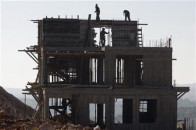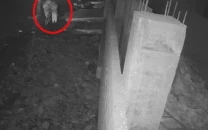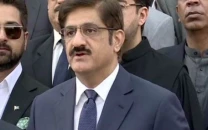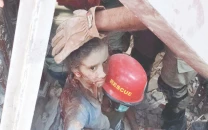Artifacts and history: An assortment of vintage items at Customs museum
The museum’s hall is surrounded by wooden-framed pictures, documents, artifacts and monuments

The Kamil Museum of Customs houses wooden framed pcitures, documents, artefacts and monuments that speak about the history of Customs. PHOTOS: AYSHA SALEEM/EXPRESS
Be it a badge, an old newspaper, a 100-year-old photograph or faded official record — every item at the Customs museum takes you down memory lane to as early as 1878.
The sprawling hall of the museum is surrounded by wooden framed pictures, documents, artifacts and monuments that apprise you about the history of Customs in the region. This noteworthy historical museum is one of the fortunes of Pakistan Customs exhibited in the Directorate of Training and Research Building. It has been named after senior preventive officer Kamil Hassan. 'The Kamil Museum of Customs' owes its present state to Hassan, who has tried to safeguard the historic tale of Pakistan Customs and made it notable for the people who visit.
"It took 25 years to research and gather all the materials related to Customs office," said Hassan. "After a considerable measure of diligent work, I began decorating them in a room, which ended up being a historical centre."
The Kamil Museum comprises the historical backdrop of Customs in the region from 1878. It offers a concise history of the first Collector, first Chief Collector, old Customs House, antique epaulettes, the first emblem assigned to Customs in 1878 after its foundation, the first Sea Customs Act 1878 and the first preventive officer of Customs.
The tour of antiquities begins with the splendid epaulets collection, which dates epaulets to a time when uneven shapes of silver, weighing all the same, were embossed with very simple but symbolic motifs. Among all the newspapers were also framed dates around 1947, which had news regarding Customs' achievements. Another eye-catching picture showed Sepoy Zahoor receiving an award from Mohtarma Fatima Jinnah, accompanied by a picture of the first female Customs preventive officer, who joined the Customs in 1946.

The most interesting aspect of the house is to witness the involvement of royals and the Queen. The museum uncovers the whole history of the Customs department through its protected assets. It holds a prominent picture of Queen Alexandra Victoria, who approved the Sea Customs Act at the time when the East India Company ended its central goal in India amid 1874 - the charge of the Indian Government was then taken over by the Majesty's Crown in Grand Britain. She also awarded her majesty crown to be worn by Customs officials. Hassan elaborated this that officials earlier used to wear the majesty crown on their shoulder epaulette and caps, but after the independence of Pakistan, the concept of the 'chand-tara' [the crescent and the star] originated.
The establishment of the Customs Museum was discussed in a meeting held in 2010, after which, the Karachi Training and Research director-general provided a hall to Hassan as he had a number of collectibles. It is only his best efforts that have made the museum what it is today.
Hassan, who holds a significant position at the museum, said that it is important to know the history of Customs as a lot people are unaware of this place. "It's a must-visit place," he said.
Sharing his experience, Hassan said that it is not an easy task to collect these exhibits. "All you need is pure dedication to succeed," he said.
According to Hassan, his collection does not end at the museum. "My collection does not end here," he said. "I have doubled the things that are present here. The Customs office has also promised to allocate two more rooms, which will soon be decorated with those items."
Published in The Express Tribune, December 27th, 2015.



















COMMENTS
Comments are moderated and generally will be posted if they are on-topic and not abusive.
For more information, please see our Comments FAQ